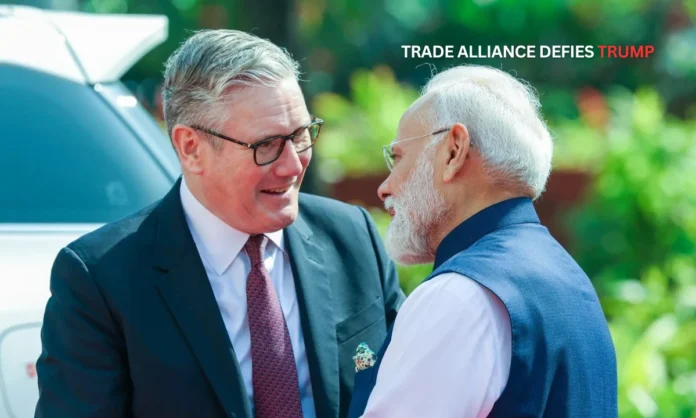Key Highlights:
- India UK trade orthodoxy drives bilateral commerce from $44.1 billion to projected $120 billion by 2030
- Trump’s 50% tariffs threaten $55 billion of Indian exports, representing 70% of India-US trade volume
- The India UK trade orthodoxy eliminates 99% of tariffs, covering nearly 100% of bilateral trade value
Economic Foundation Strengthening India-UK Trade Orthodoxy
The comprehensive India UK trade orthodoxy framework, formalized through their July 2025 agreement, represents a strategic pivot from zero-sum trade approaches adopted by President Trump’s administration. This India UK trade orthodoxy eliminates tariffs on 99% of Indian exports to Britain and reduces duties on 90% of UK exports to India. The India UK trade orthodoxy projects increasing UK GDP by £4.8 billion annually while boosting bilateral trade by £25.5 billion by 2040.
The visit of Prime Minister Sir Keir Starmer alongwith the largest ever business delegation to India marks a significant step in strengthening the India–UK partnership.
— Prashant Ruia (@prashantruia) October 9, 2025
It was an honour to attend the India–UK CEO Forum and meet Prime Minister @NarendraModi and Prime Minister… pic.twitter.com/PWfBgxWMaF
Current bilateral trade between the nations stands at $44.1 billion in the four quarters ending Q1 2025, representing a 10.1% increase from the previous year. The India UK trade orthodoxy demonstrates remarkable growth potential, with UK exports to India reaching £17.5 billion and imports totaling £26.6 billion. India maintains its position as Britain’s 11th largest trading partner, accounting for 2.4% of total UK trade.publishing.
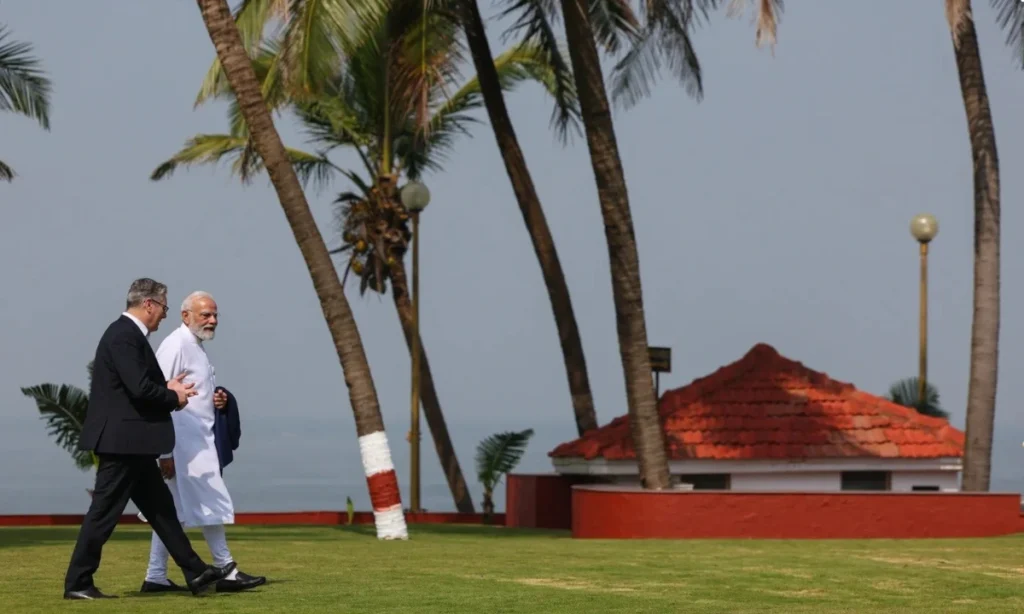
The timing of this India UK trade orthodoxy proves particularly significant as both nations face Trump’s punitive trade measures. The US imposed 50% tariffs on Indian goods in August 2025, targeting $55 billion worth of exports and threatening approximately 70% of India’s trade with America. These tariffs represent among the highest globally, implemented to punish India for maintaining trade relationships with Russia during the Ukraine conflict.
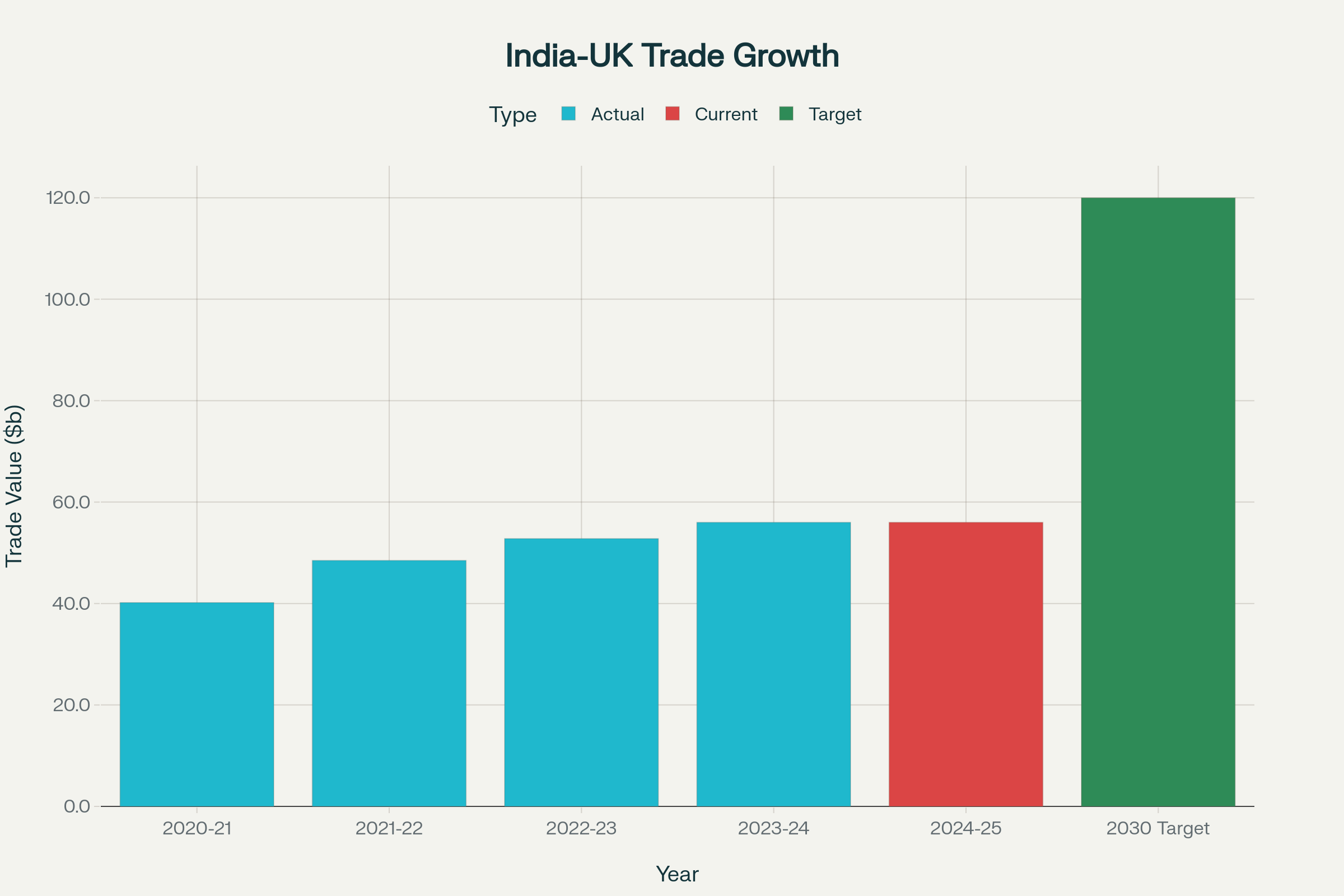
India-UK bilateral trade growth trajectory showing current performance and 2030 doubling target
Investment Momentum Validates India-UK Trade Orthodoxy
The India UK trade orthodoxy has generated substantial investment commitments, demonstrating its practical effectiveness beyond theoretical frameworks. During Starmer’s Mumbai visit, 64 Indian companies pledged £1.3 billion in UK investments, creating approximately 6,900 jobs across British regions. These investments span engineering, technology, and creative industries, with major announcements including Graphcore’s £1 billion infrastructure investment in India over the next decade.
The India UK trade orthodoxy facilitates remarkable bilateral investment flows. UK foreign direct investment stock in India reached £17.5 billion by end-2023, while Indian FDI in Britain totaled £12.4 billion, showing 22.2% growth from previous years. Currently, 971 Indian companies operate in the UK with combined revenues exceeding $90 billion, while 667 British companies actively participate in India’s market.publishing.
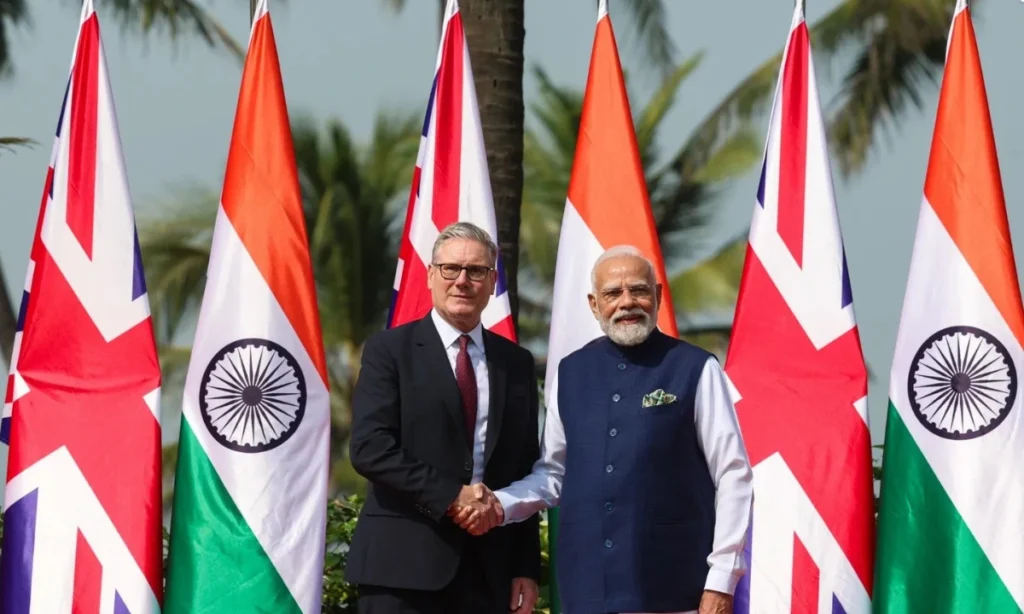
Professional mobility provisions represent another breakthrough within the India UK trade orthodoxy framework. The agreement provides streamlined entry for Indian contractual service suppliers, business visitors, and independent professionals. The Double Contribution Convention eliminates dual social security payments for Indian workers on temporary UK assignments, benefiting approximately 75,000 professionals and 900 companies with savings exceeding ₹4,000 crore.
| Investment Flow | 2023 Value (£ Billions) | Growth Rate | Employment Impact |
|---|---|---|---|
| UK Investment in India | 17.5 | -12.9% | 500,000+ jobs |
| Indian Investment in UK | 12.4 | +22.2% | 100,000+ jobs |
| New Commitments 2025 | 1.3 | – | 6,900 new UK jobs |
Protectionist Pressures Challenge India-UK Trade Orthodoxy
The India UK trade orthodoxy emerges as a response to mounting protectionist pressures threatening global trade frameworks. Trump’s trade policies have fundamentally challenged post-World War II trade orthodoxy built around WTO principles, pursuing bilateral negotiations focused on rebalancing commerce in America’s favor through unilateral tariff impositions. This represents a significant departure from traditional free trade consensus that has governed international commerce for decades.
India’s exports to the US plunged 22.2% between May and August 2025, declining from $8.8 billion to $6.9 billion as tariff pressures intensified. The decline spans multiple sectors, with textiles, gems and jewelry, chemicals, and electronics experiencing substantial contractions. Even tariff-exempt products like smartphones witnessed alarming declines, reflecting broader demand disruptions caused by trade tensions.
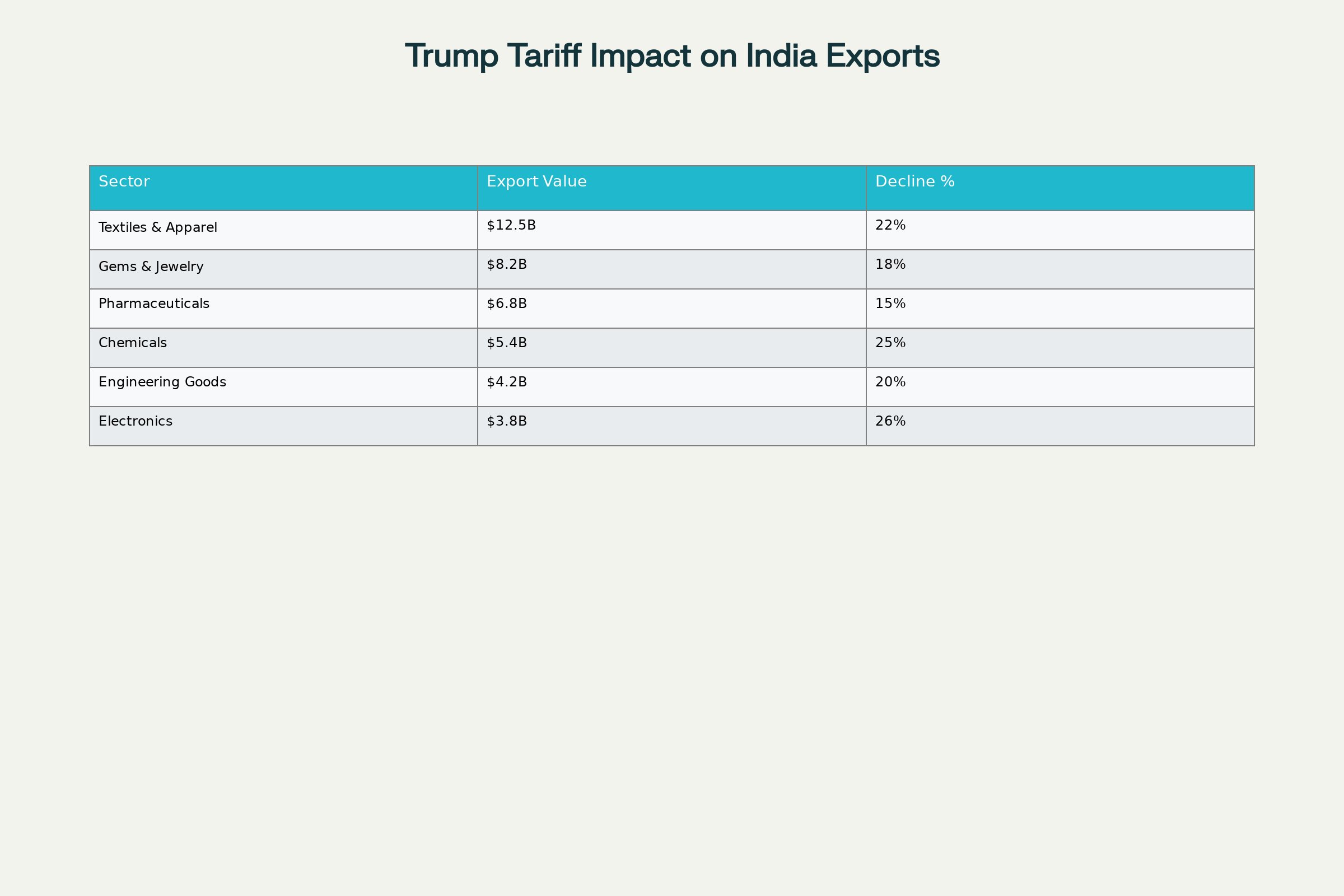
Impact of Trump’s 50% tariffs on India’s major export sectors to the United States
The India UK trade orthodoxy provides critical diversification opportunities as traditional trade relationships face disruption. Economic analysis suggests increased protectionism could cause 0.3% annual global income loss, increase consumer prices, and disproportionately impact low-income households. The India-UK trade orthodoxy serves as a counterbalance to these trends, demonstrating how major economies can resist protectionist pressures through deepened bilateral cooperation.
Strategic Vision for India-UK Trade Orthodoxy
Both Modi and Starmer emphasized the India UK trade orthodoxy’s role in providing stability amid global trade uncertainty. Modi described the relationship as showing “the world the way on global trade,” while Starmer highlighted the significance of “two important democracies” providing “stability and certainty” during uncertain economic times. The India-UK trade orthodoxy deliberately avoids direct criticism of Trump’s policies while promoting positive-sum trade benefits.
The India UK trade orthodoxy addresses contemporary challenges beyond traditional trade barriers through digital trade provisions, environmental cooperation commitments, and innovation partnerships. These elements position the India-UK trade orthodoxy as forward-looking rather than merely reactive to current trade tensions. The agreement targets doubling bilateral trade to $120 billion by 2030, representing an ambitious 114% increase from current levels.
World Trade Organization Director-General Ngozi Okonjo-Iweala recently emphasized that “there is a core in the multilateral trading system that continues to work well,” highlighting the importance of maintaining free trade mechanisms amid rising protectionism. The India-UK trade orthodoxy exemplifies this commitment to multilateral principles while providing practical alternatives to protectionist approaches.
Final Perspective
The India UK trade orthodoxy represents a strategic commitment to preserving multilateral trade principles during an era of unprecedented protectionist pressure. As Trump’s tariff policies fragment global trade relationships, the India-UK trade orthodoxy demonstrates how major economies can chart alternative paths toward shared prosperity. The India-UK trade orthodoxy’s emphasis on inclusive growth, professional mobility, and technological cooperation offers a compelling counter-narrative to zero-sum trade approaches, potentially serving as a model for other nations navigating contemporary international commerce complexities. The success of this India-UK trade orthodoxy will ultimately depend on its ability to deliver tangible economic benefits while maintaining diplomatic flexibility in an increasingly polarized global trade environment.

